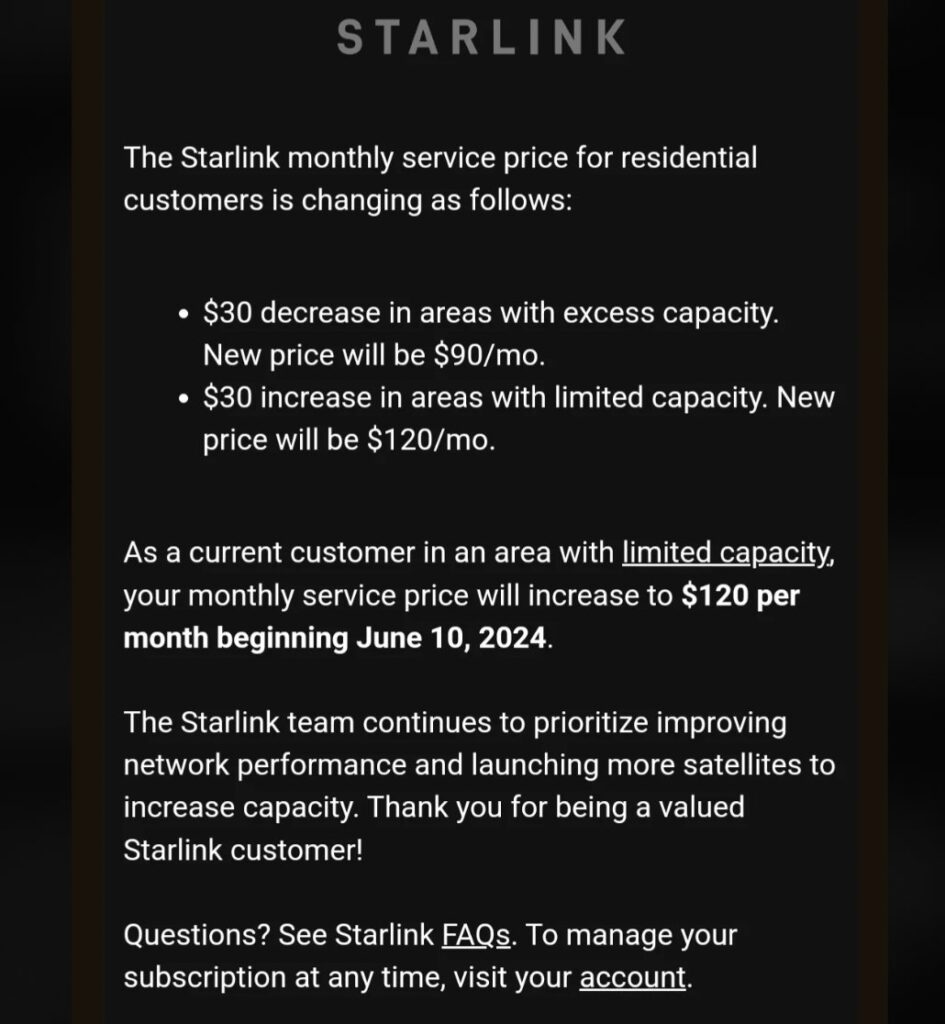SpaceX Adjusts Starlink Pricing: Implications for U.S. Users and the Broadband Market
SpaceX has recently announced a pricing adjustment for its Starlink satellite internet service in the United States, sparking a mix of reactions among current and prospective users. This decision raises important questions about the implications for the accessibility of high-speed internet in remote areas and the competitive landscape of the broadband market. This article delves into the reasons behind the price increase, the potential impacts on consumers, and the broader ramifications for the satellite broadband industry.
The Reasons Behind the Price Increase
Infrastructure Costs
SpaceX has invested heavily in the Starlink project, launching thousands of small satellites to create a comprehensive network capable of delivering high-speed internet globally. The costs associated with these launches, satellite maintenance, and ground station development are substantial. The price adjustment can be seen as an effort to offset these ongoing expenses and fund future expansions.
Demand and Supply Dynamics
With the growing demand for reliable internet in underserved areas, Starlink has become a popular solution. However, balancing the network’s capacity with increasing user numbers is crucial to maintaining service quality. The price increase may help manage demand more effectively, ensuring that users receive consistent and high-quality service.
Impact on Consumers
Increased Financial Burden
For current users, the price hike might introduce a new financial burden, especially for those in remote or rural areas where alternative broadband options are limited or non-existent. This could affect their ability to access essential online services and contribute to digital inequities.
Potential Benefits
On the other hand, the additional revenue from the price increase could enable SpaceX to accelerate improvements in network capabilities and service availability. This might include faster speeds, better data packages, and expanded coverage, ultimately benefiting consumers.

Broader Implications for the Satellite Broadband Industry
Competitive Pressure
SpaceX’s pricing strategy could influence other players in the satellite internet market, such as Amazon’s Project Kuiper and OneWeb. These competitors may adjust their pricing models based on Starlink’s moves, potentially leading to higher overall prices in the sector.
Innovation and Growth
Increased investment in satellite technology driven by higher revenues could spur innovation across the industry. This might lead to more advanced satellite technologies, more efficient service delivery, and even new applications of satellite internet beyond basic broadband.
Regulatory Attention
As satellite internet becomes more critical for global connectivity, regulatory bodies may take a closer interest in pricing practices and their impact on market competition and consumer rights. This could lead to new regulations aimed at protecting consumers and ensuring fair competition.
SpaceX’s decision to increase Starlink’s pricing in the U.S. is a multifaceted issue with significant implications for consumers and the satellite broadband market. While it poses challenges, particularly in terms of affordability, it also opens doors for enhanced service quality and technological advancement. As the satellite internet landscape continues to evolve, monitoring these developments will be crucial for stakeholders across the board.
